

William Stopford
Every SUV, ute and van discontinued in Australia in 2025
9 Hours Ago
Sporty name and design aside, the Eclipse Cross is a spacious and comfy small SUV that in LS AWD spec lacks some active safety smarts.

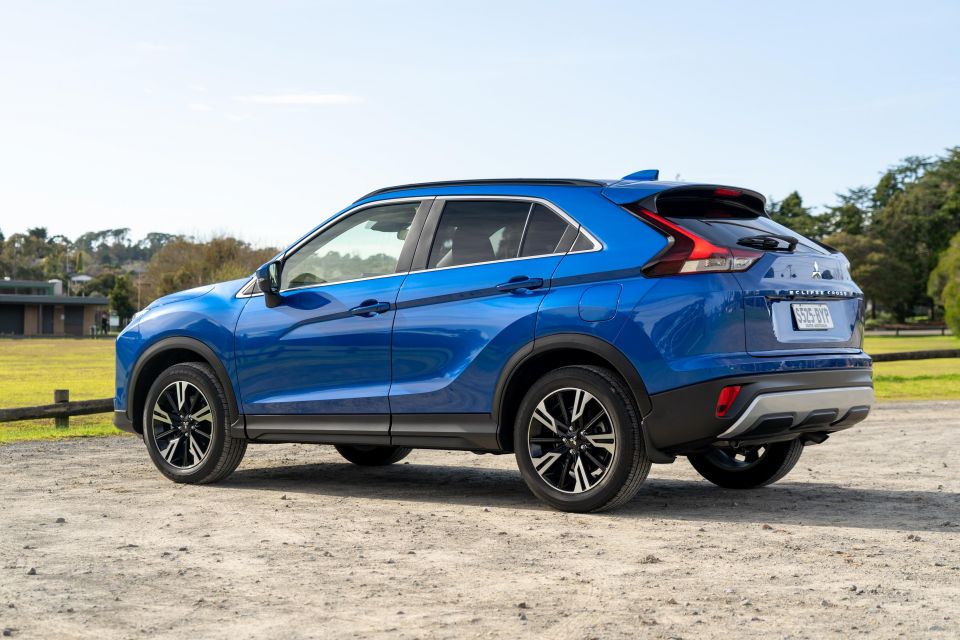

Marketplace Editor
New from
$35,090
excl. on-roads

Marketplace Editor
New from
$35,090
excl. on-roads


Marketplace Editor
New from
$35,090
excl. on-roads

Marketplace Editor
New from
$35,090
excl. on-roads
Quickly see how this car stacks up against its competition. Select any benchmark to see more details.
Where expert car reviews meet expert car buying – CarExpert gives you trusted advice, personalised service and real savings on your next new car.
Growing up, the Mitsubishi Eclipse was one of those cool Japanese sports cars that featured on posters or in video games.
Fast forward to now and the reboot takes the form of a boldly-styled crossover built on the same bones as the ASX and Outlander. Hardly gets your pulse racing.
The 2021 Mitsubishi Eclipse Cross is a mildly facelifted iteration of the original, inspired by the 2017 e-Evolution concept. A more resolved rear end should polarise less, but the swoopy sportback tailgate remains.
With turbo petrol power, available all-wheel drive and a bigger back seat and boot than most rivals, can the Eclipse Cross make a case for itself in one of Australia’s fastest growing vehicle segments?
The 2021 Mitsubishi Eclipse Cross range opens with the front-wheel drive ES variant at $30,290 before on-road costs.
On test we have the one-up-from-base Eclipse Cross LS with optional all-wheel drive, bringing the starting price to $35,090 plus on-roads.
At the time of writing, Mitsubishi Australia is offering the variant on test from $36,990 drive-away.
See the full price list below:
All prices exclude on-road costs

All-wheel drive is increasingly becoming a rarity in the small SUV segment, with alternatives limited to the likes of:
Prices exclude on-road costs unless specified
The Eclipse Cross is middle of the road relative to its peers, though keep in mind the LS is technically one-up from base even in AWD guise and the rivals mentioned above are closer to the pointy end of their respective model ranges.
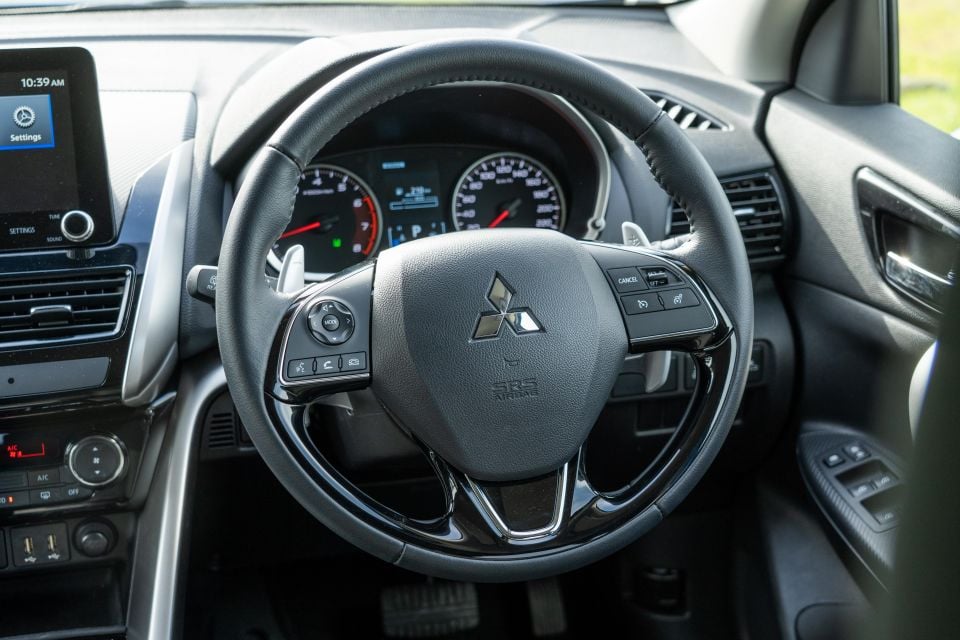
Buy your new car without the stress. It's fast, simple and completely free.

Great service from Travis and team, second time I have used this business would not hesitate to recommend them to anyone
Craig C.
Purchased a Ford Ranger in Sunshine Coast, QLD
CarExpert helped Craig save thousands on his Ford Ranger, now let us save you on your next new car.
Find a dealThe LS gets the following equipment over the base model:
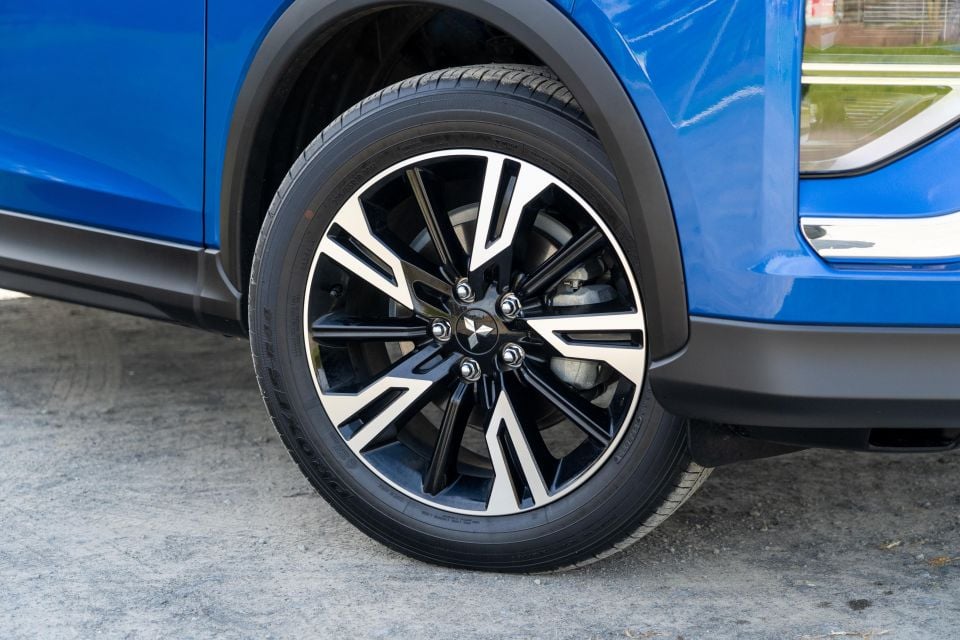
Carryover equipment from the ES grade includes:
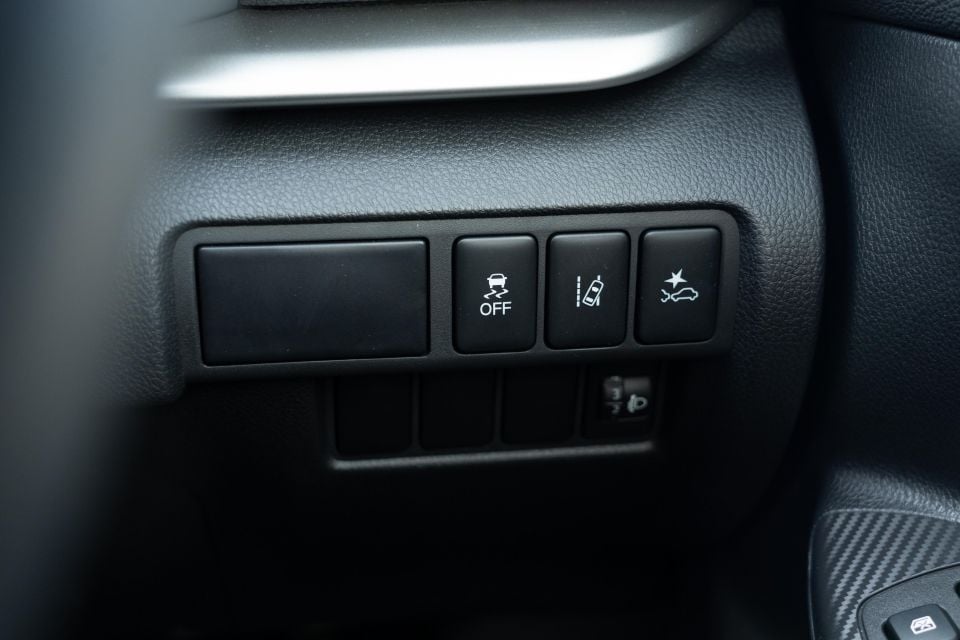
While equipment levels are decent, the Eclipse Cross is missing numerous features at this price point, namely in the area of active safety.
Notably absent are lane-keep assist, adaptive cruise control, and LED headlights, all reserved for higher trim levels. You also miss out on factory satellite navigation and a digital speedometer.
To get the full complement of driver assists with all-wheel drive you need to shell out top dollar for the flagship Exceed AWD, which is currently advertised from $43,990 drive-away – $7000 more than the LS AWD you see here.
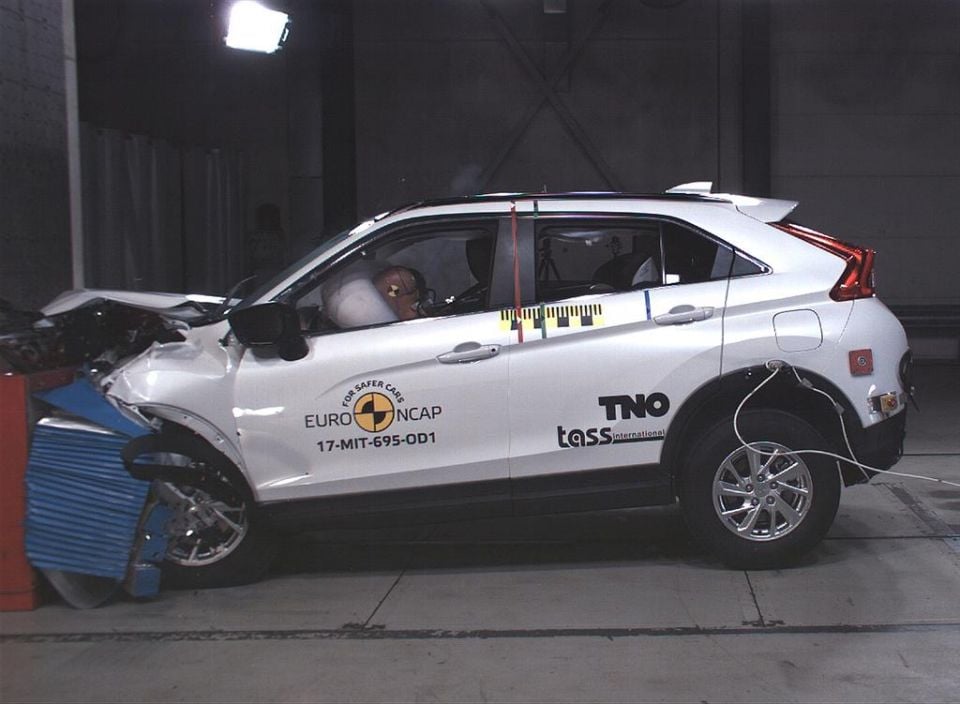
The Mitsubishi Eclipse Cross wears a five-star ANCAP safety rating based on tests conducted in 2017 by Euro NCAP.
All models received an impressive adult occupant protection score of 97 per cent, child occupant protection score of 78 per cent, vulnerable road user protection score of 80 per cent and a safety assist score of 58 per cent.
All 2021 Mitsubishi Eclipse Cross models come standard with the following safety equipment:
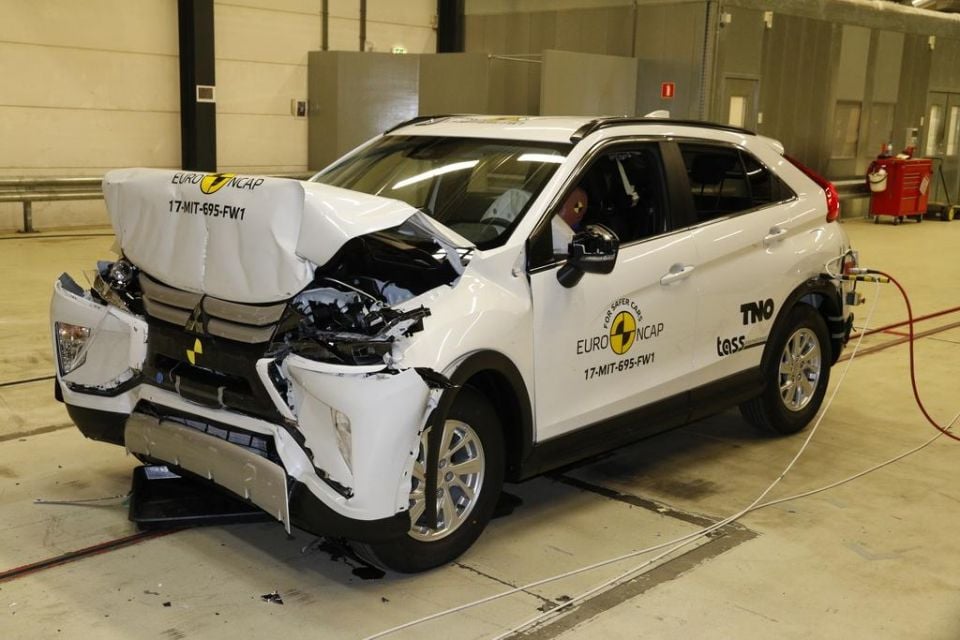
Stepping up to the LS we have on test adds:
If you want features like adaptive cruise control, blind-spot monitoring, rear cross-traffic alert, Lane Change Assist and surround cameras, however, you need to spend the extra on the Aspire and Exceed variants.
Given most rivals offer full safety tech suites as standard or at least an option from the base level, it’s disappointing buyers of the Eclipse Cross need to spend at least $36,490 drive-away (at the time of writing) for the Aspire FWD for these features, or $43,990 drive-away for the flagship Exceed AWD if you want all-paw traction.
Even LED headlights are reserved for the top-spec model.

While the exterior – particularly the rear end – got a pretty comprehensive refresh as part of the mid-life facelift, the interior offers much of the same.
Apart from some different seat fabric and a new infotainment screen, the cabin’s design is basically lifted from the old one.
Material quality is generally pretty good, with a good mix of softer and harder, glossy surfaces, though the grainy texture of the high-tier plastics look dated already, and the thin-rimmed steering wheel’s leather doesn’t feel particularly high end.
The dials ahead of the driver again look quite basic and old-school, and the colour display in the cluster has graphics that been around since the ASX first launched over a decade ago. No digital speed readout – really?!
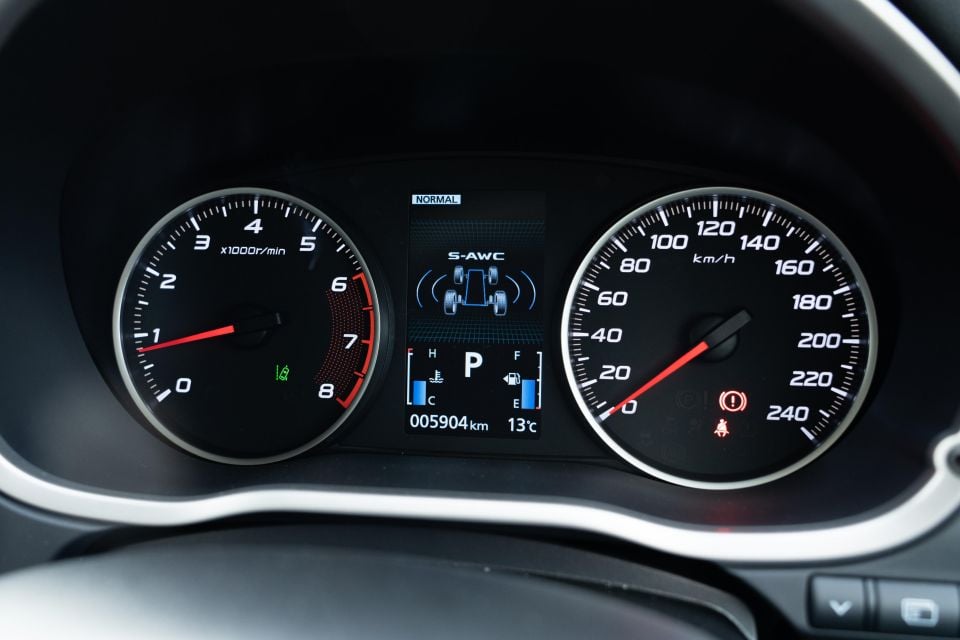
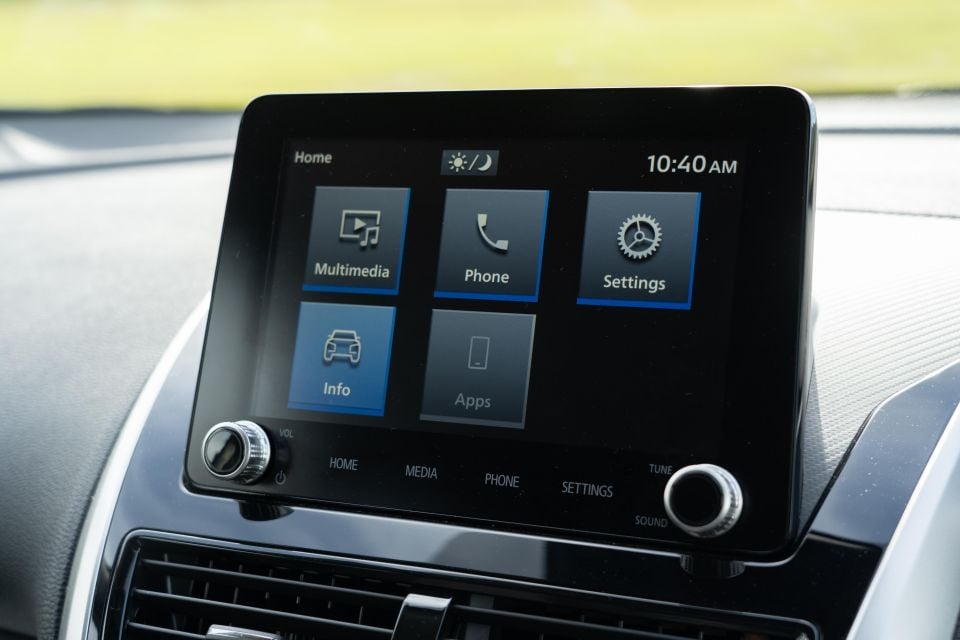
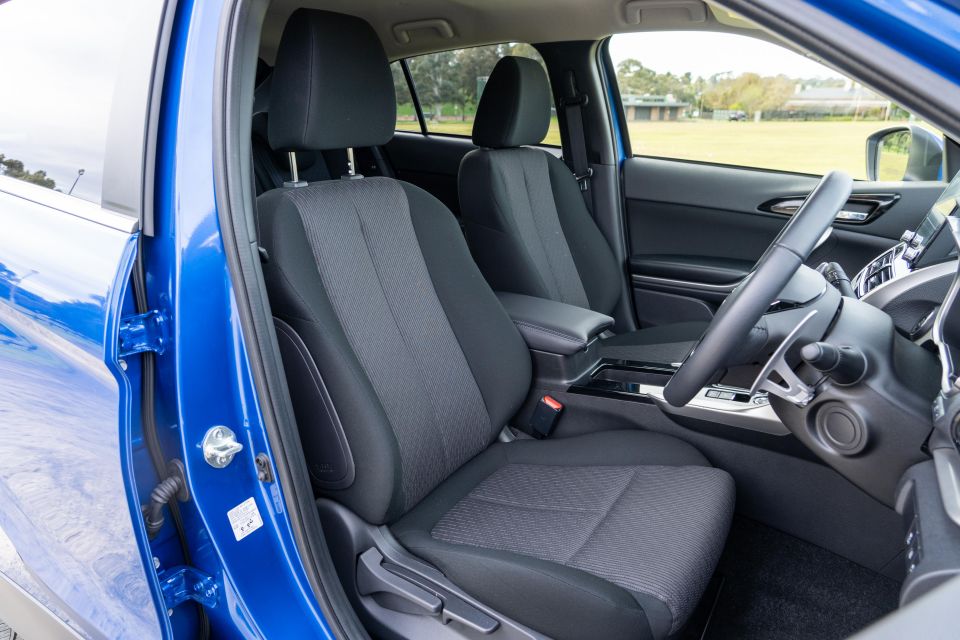
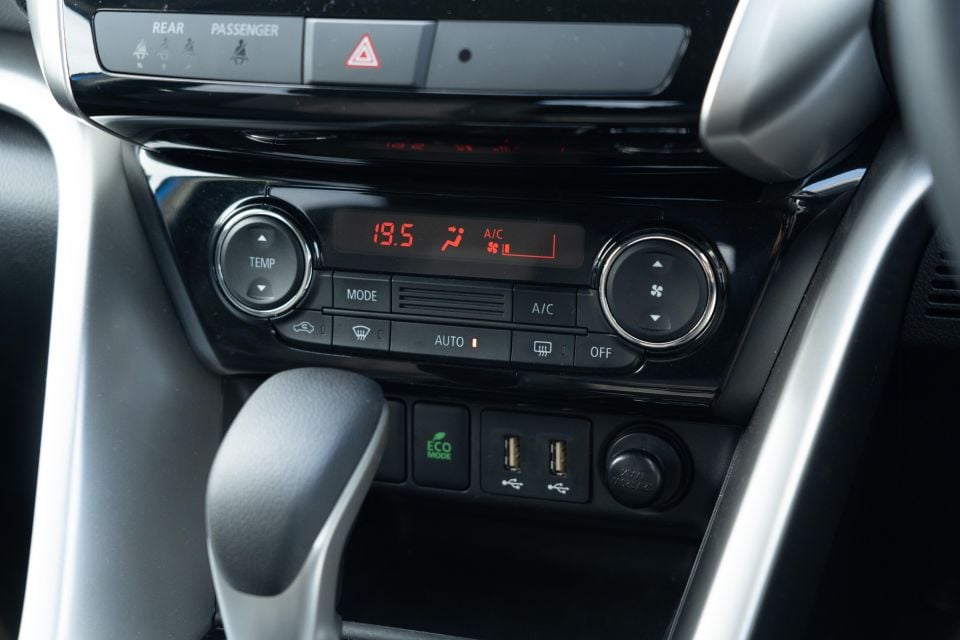
It’s worth praising the comfortable, supportive seats, and the high-set infotainment system, which measures 8.0 inches, is placed in the driver’s line of sight although it juts out quite a bit and looks like an afterthought.
All the switchgear feels solid and well-damped in everyday use, though the stalks behind the steering wheel feel plasticky and low-rent. It’s pretty common across most of Mitsubishi’s current line-up, given the bulk of these elements are shared with the ASX, Outlander, and Pajero Sport.
The driver sits nice and high, and the Eclipse Cross is on the larger side relative to its peers, meaning you get a big-car feel in a not-so-big package. It feels like a short-wheelbase Outlander, truthfully, and given this shares its platform and wheelbase with its soon-to-be-replaced larger sibling, that makes sense.
Space and storage is good, too, with door bins large enough to fit big bottles and then some, a decent cubby under the front-centre armrest, and a shallow shelf to store your phone when it’s connected to Apple CarPlay/Android Auto, though my iPhone 12 Pro Max struggles to fit without knocking the shifter.
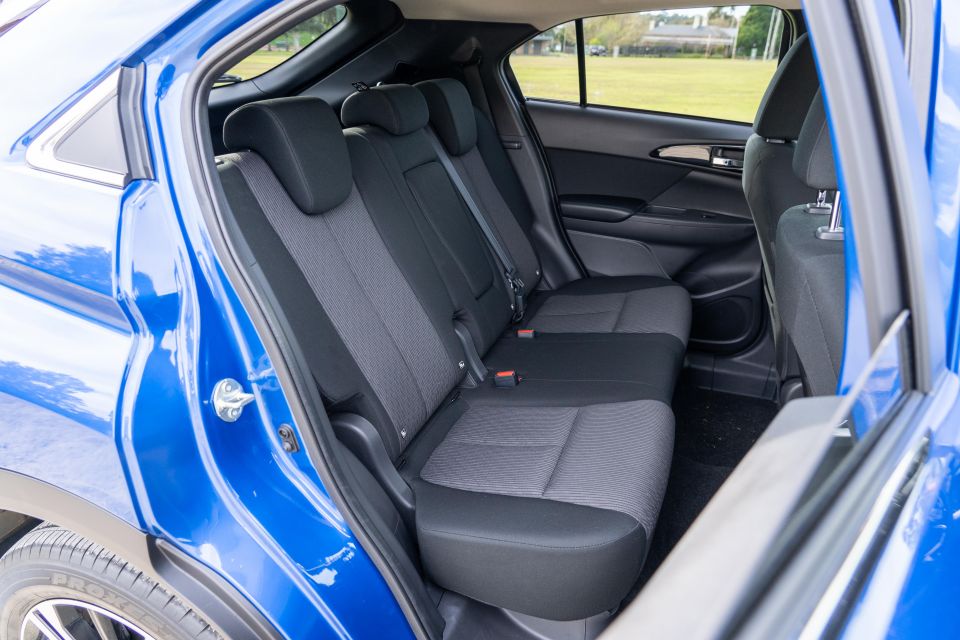
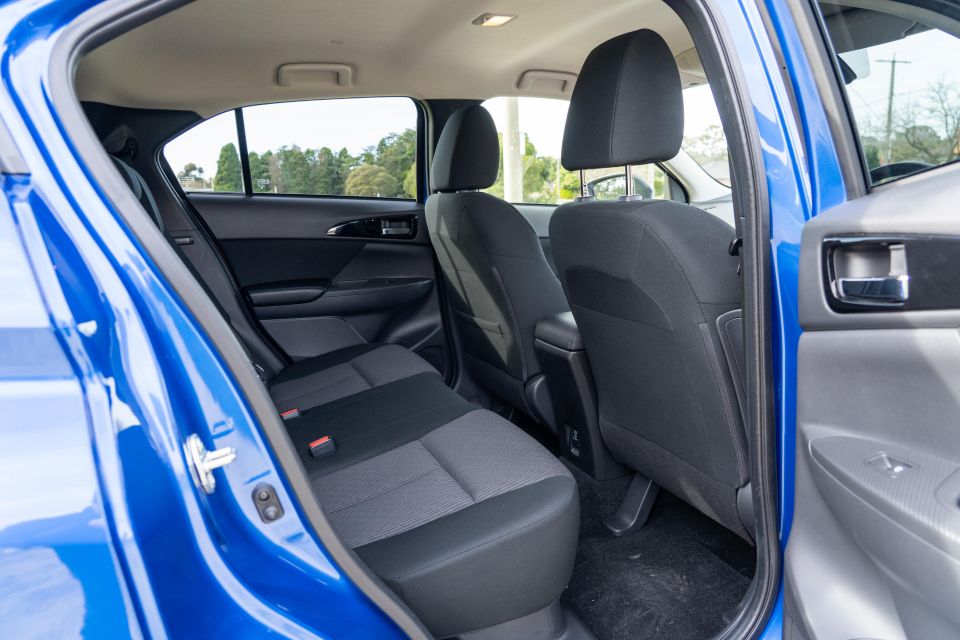
Move to the second row and the shared underpinnings with the current Outlander reaps benefits. Head and legroom even for 6’1-ish me is generous for the class behind my own driving position, and outward visibility is good thanks to the large windows. Kids shouldn’t get car sick.
Amenities include a fold-down centre armrest with cupholders, bottle holders in the doors, a map pocket behind the front passenger seat, and a USB-A charge port behind the centre console. What’s disappointing, though, is the lack of directional air vents at the rear which seems fitting for a vehicle of this size and capability in the rear.
The Eclipse Cross also doesn’t have the annoying roof-mounted centre seatbelt that features in the smaller ASX and larger Outlander.
ISOFIX child seat mounts are on the outer positions, while there’s top-tether points across all three rear seats. Kid- and family-friendly, then.
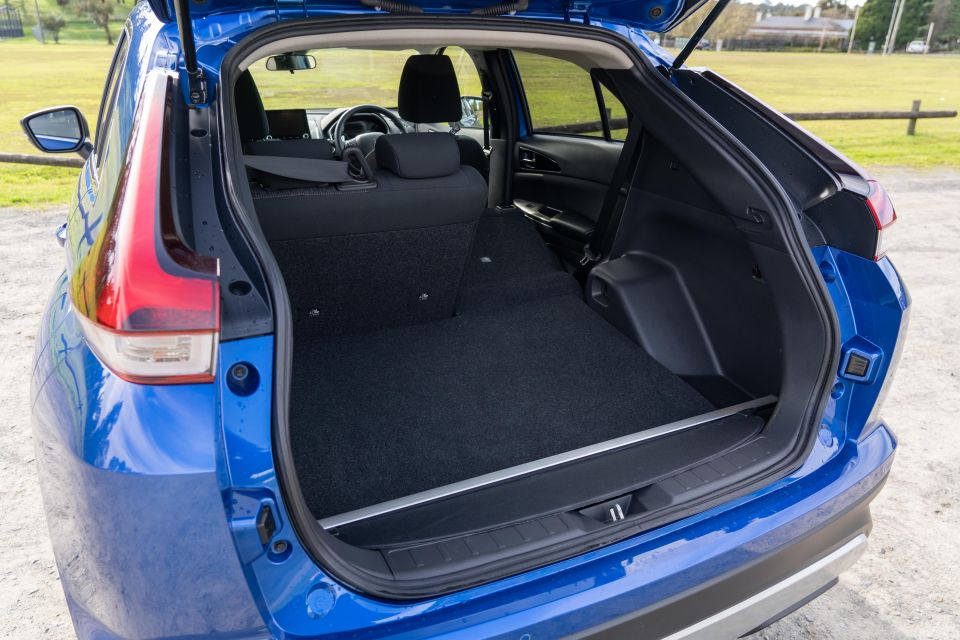
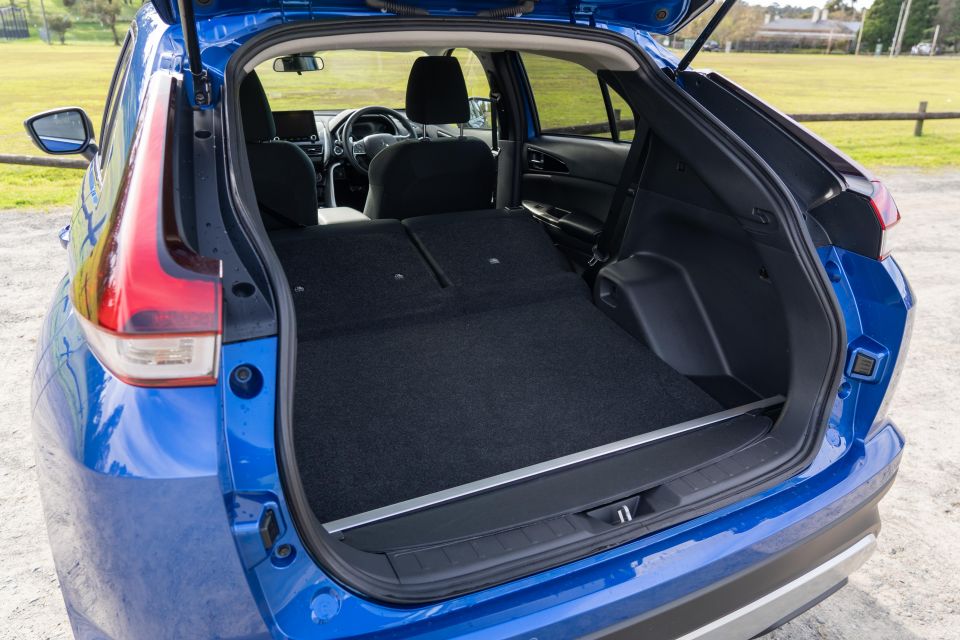
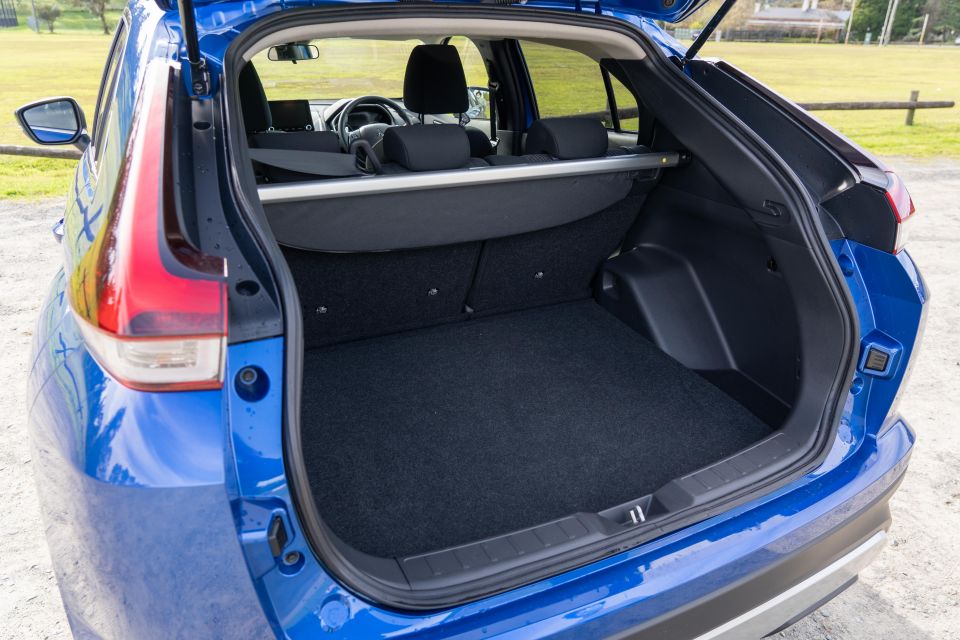
The boot area offers a healthy 405L of capacity with the rear seats in place, expanding to 1149 litres with them folded.
It’s middle of the road when compared to rivals, with the Hyundai Kona and Subaru XV offering less space while the Kia Seltos and Nissan Qashqai offer more.
The space itself is nice and wide, and there’s limited load lip if you have to lift heavier items in and out. Possibly the only drawback is that sloping tailgate, which eats into the luggage area and limits space for taller items with the second row in play.
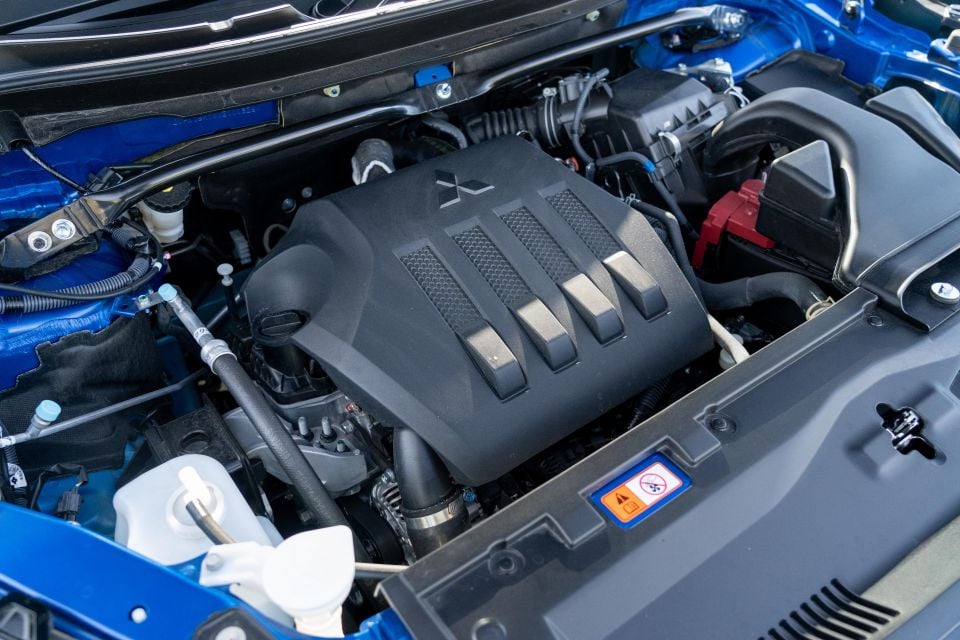
Petrol-only versions of the Mitsubishi Eclipse Cross are powered by a 1.5-litre four-cylinder turbo petrol engine outputting 110kW (5500rpm) and 250Nm (2000-3500rpm).
A continuously-variable transmission (CVT) is standard, with drive sent to the front wheels as standard or all four in the case of our test car.
Models with all-wheel drive feature Mitsubishi’s S-AWC (Super All Wheel Control) branding, which electronically distributes torque front to rear as required. Active Yaw Control (AYC), or torque vectoring via braking, distributes drive left to right at both ends for optimal traction.
Like most all-wheel drive systems at this end of the market, the system defaults to front-wheel drive and will then send torque to the rear axle under hard acceleration or when slip is detected.
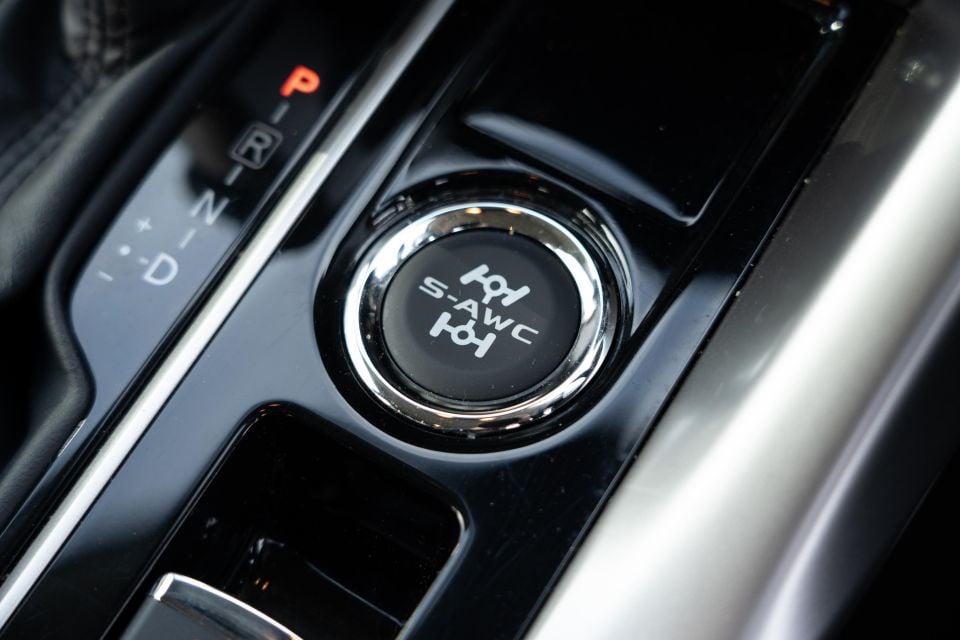
There are also several modes for the S-AWC system, including Normal, Gravel and Snow. Each tailors the electronics for their respective surfaces.
A plug-in hybrid model is also about to hit showrooms, using a similar drivetrain to the Outlander PHEV – an atmo 2.4-litre petrol engine, lithium battery and electric motors good for up to 55 kilometres of zero-emissions driving per charge.
Fuel consumption for the petrol model is officially quoted at 7.7L/100km for the AWD version we have on test, 0.4L/100km more than the front-driven model.
The turbocharged motor is happy with 91 RON regular unleaded, and the fuel tank is a relatively large 60 litres in capacity – 3L less than the front-wheel drive version.
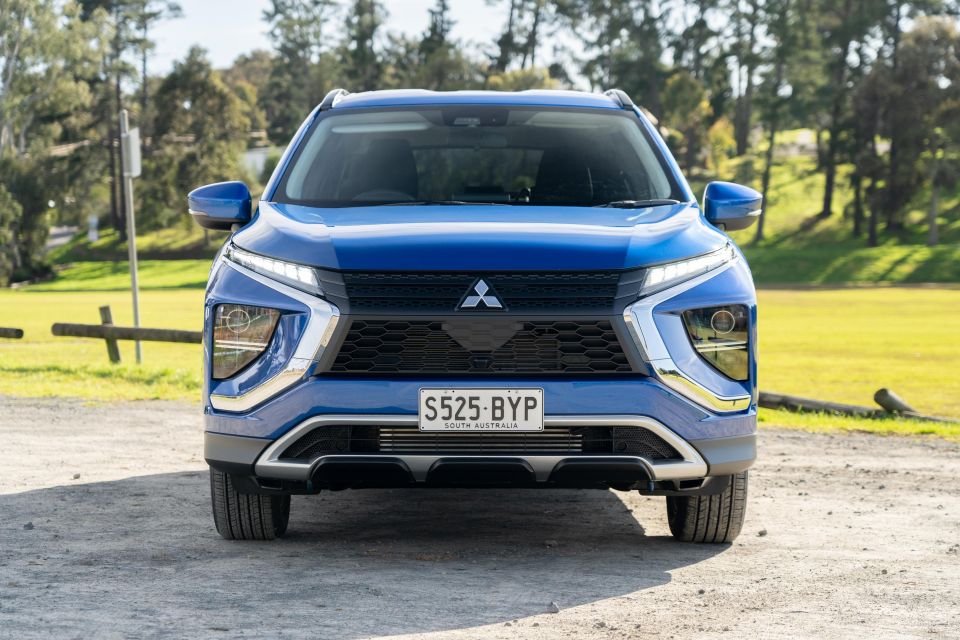
Where expert car reviews meet expert car buying – CarExpert gives you trusted advice, personalised service and real savings on your next new car.
Despite its rakish silhouette and sports-car-inspired name, the Eclipse Cross is an SUV that focuses on comfort.
It’s very softly tuned in most aspects, meaning it isn’t the last word in driver engagement, but if you’re after something that’ll transport you and your family in insulated comfort it could be a winner – if a little uninspiring.
The 1.5-litre turbo petrol engine and CVT combo make acceleration linear and mostly effortless, and it builds speed deceptively quickly. At times the CVT’s tendency to hold revs or slur through ‘steps’ is a little droney and annoying, but it gets the job done and doesn’t sound as laboured as some naturally-aspirated rivals.
With all 250Nm available from 2000rpm, the Mitsubishi gives you a slight shove in the back as peak torque comes online, and driving around town is pretty effortless.
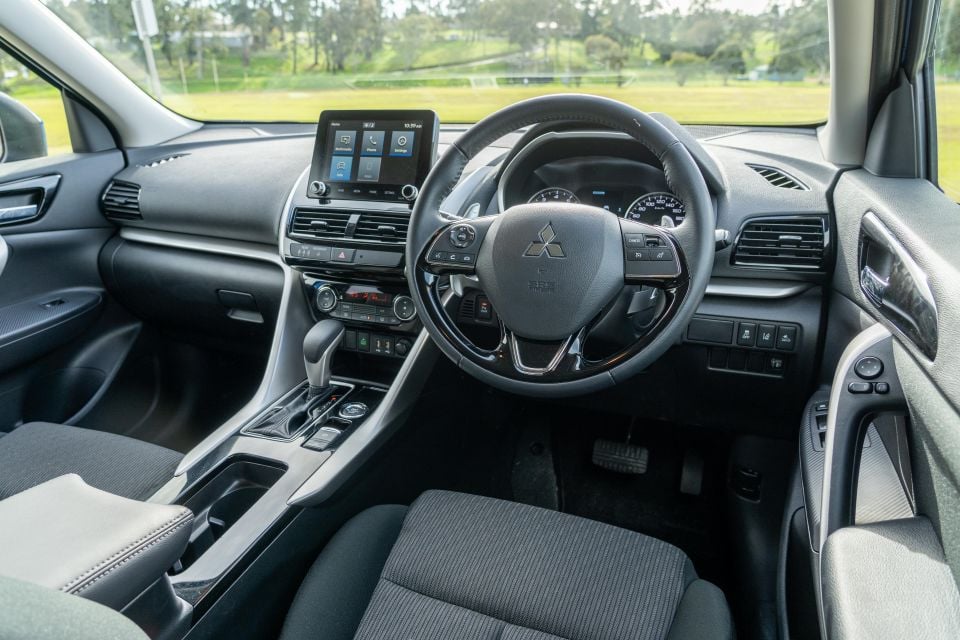
The steering is middling in terms of weight and feedback, and the high-set driving position and raised shoulder line make the Eclipse Cross feel like a much bigger vehicle, for the better.
In town it gets along just fine, and irons out pimpled inner-city roads rather well. It’s also fairly easy to park, with big mirrors and a decent reverse camera, though the huge C-pillar can create a pretty major blind spot. I’d also like to see a kerb-side dipping function, but that’s nit-picking on an entry-level model.
On the open road the Eclipse Cross shows promise as well, with that big-car feeling translating to a planted, confident demeanour as the speed hits triple figures.
In this LS AWD grade, however, you’re handy features like lane-keep assistance, adaptive cruise control and blind-spot monitoring. There’s not even a digital speedo for when you set the cruise control.
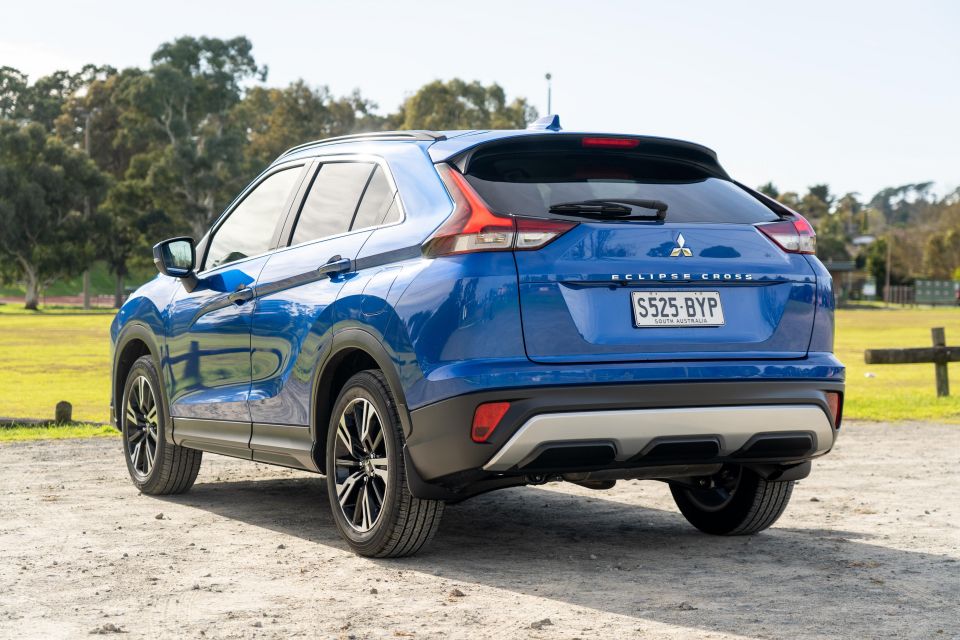
If you’re upgrading from a much older car, this probably isn’t as big a deal as it is to me, but if you’re across what’s available in the segment these small aspects can make a world of difference.
This makes the Eclipse Cross feel dated and quite analogue compared to rivals.
Refinement at speed is definitely toward the pointier end of the class, though. Road and wind noise are well suppressed, and that softer suspension tune means the Mitsubishi is rarely upset by bumps and potholes at speed without feeling clumsy or top-heavy.
Overall, it’s decent without being a standout or benchmark.
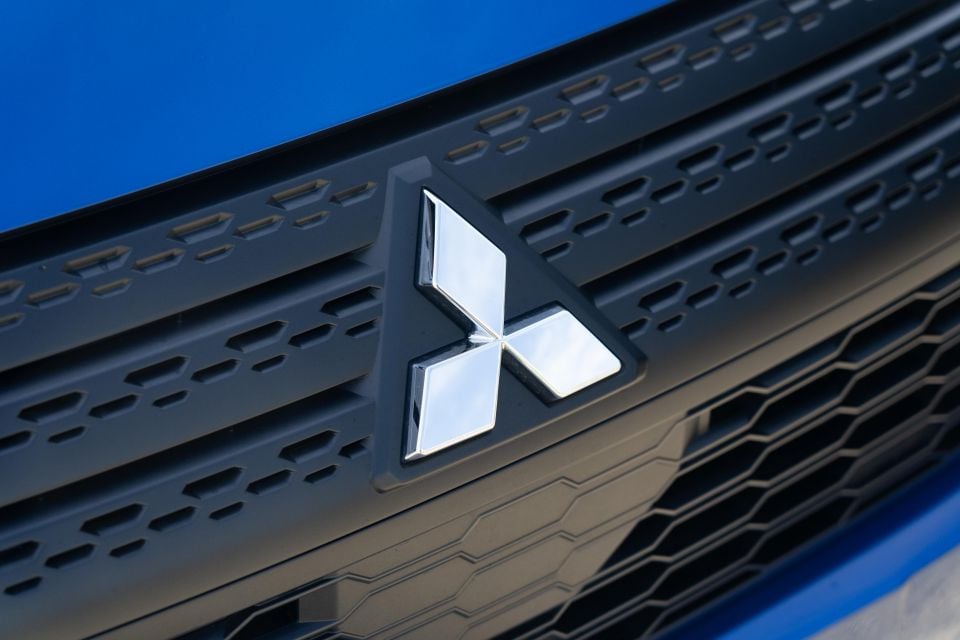
The 2021 Mitsubishi Eclipse Cross requires servicing every 12 months or 15,000km, whichever comes first. Mitsubishi offers ten years of capped-price servicing.
Service prices for the first 10 years are as follows:
As an added bonus, if you service your Eclipse Cross within the Mitsubishi dealer network, the five-year, 100,000km warranty is increased to 10 years and 200,000km.
In terms of real-world fuel economy, we saw an indicated 8.0L/100km over 300km of mixed driving – not far off the company’s 7.7L/100km claim. It’s worth noting our loan coincided with Victoria’s two-week lockdown in July, so a lot of shorter trips bumped up consumption slightly.
That means you can easily expect 600-700 kilometres per fill of the 60-litre tank, and the 91 RON fuel rating will save you at the pump. Shame there’s no idle stop/start if you do more urban commuting – which will no doubt drive up the economy figure – but there’s always the PHEV if you want to slash your bill.
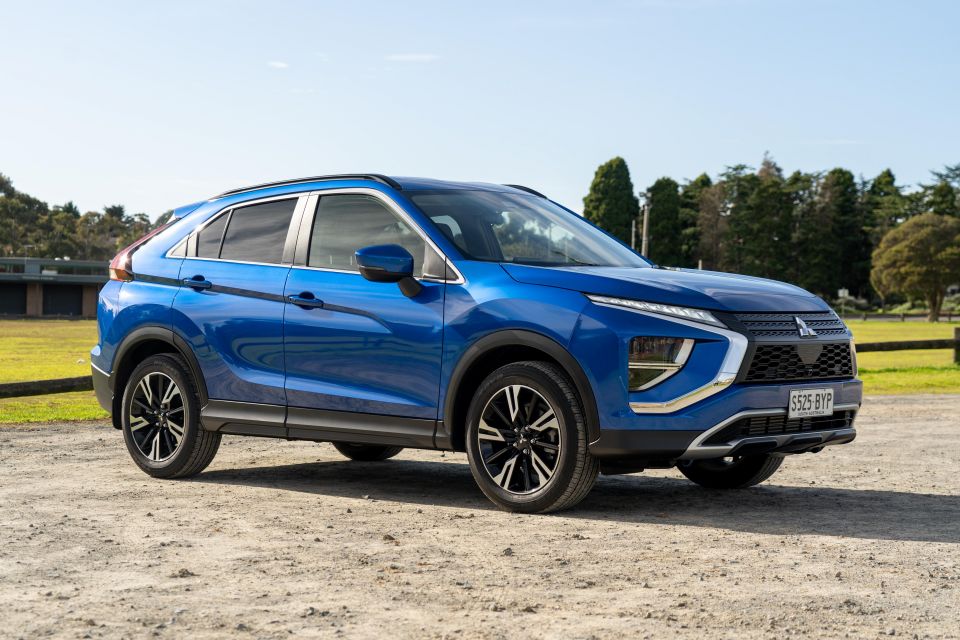
The 2021 Mitsubishi Eclipse Cross builds on a solid base with more resolved design and more resolved infotainment.
Relative to the small SUV segment, the Eclipse Cross is one of the larger offerings with one of the most spacious second rows and a big boot, and is one of the few entrants in the class that is as at home on the freeway as putting around the ‘burbs.
However, the bulk of its best bits are reserved for the highest trim levels, and in LS AWD spec you’ve got entry-level equipment levels with a mid- to high-grade price tag.
It’s also lacking in active safety and some convenience features, which is a key sore point as competitors offer better, more substantial tech suits for similar/less money. Give it a look, but we’d say the Aspire or Exceed trims are better bets.
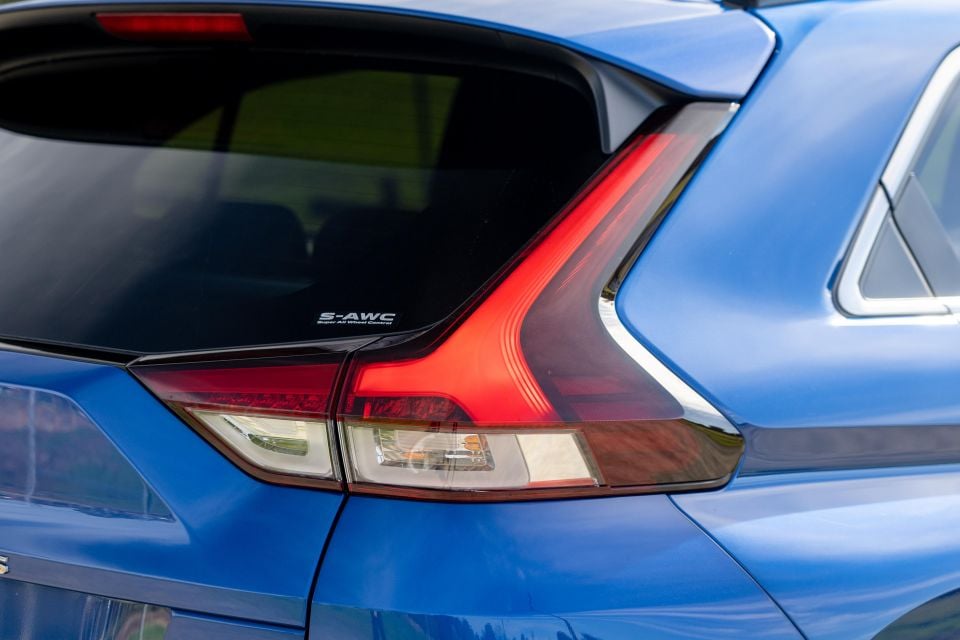
Click the images for the full gallery
Where expert car reviews meet expert car buying – CarExpert gives you trusted advice, personalised service and real savings on your next new car.
James Wong is an automotive journalist and former PR consultant, recognised among Australia’s most prolific motoring writers.


William Stopford
9 Hours Ago


Ben Zachariah
10 Hours Ago


Derek Fung
10 Hours Ago


Matt Campbell
17 Hours Ago


William Stopford
1 Day Ago


Josh Nevett
1 Day Ago